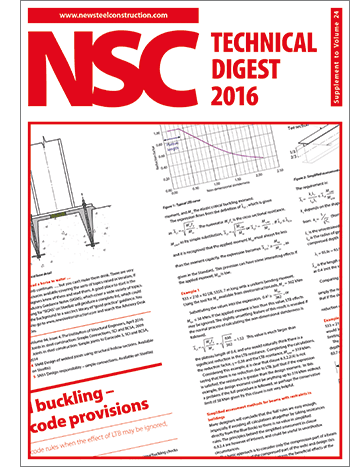Technical
AD 531: Heavy power floats on composite slabs during construction
It has come to SCI’s attention that composite slabs are being loaded with large power floats weighing up to 1 tonne, that have not been accounted for in the design. The purpose of this note is to remind designers of construction stage loading used in the design of decking profiles and provide guidance in situations where these loads are exceeded.
Power floating is carried out within 2-3 hours of casting after the concrete has sufficiently hardened but prior to it gaining full strength and should therefore be accounted for in the design of the decking profile or slab. As noted in SCI publication P300 ‘Composite Slabs and Beams using Steel Decking’, where construction equipment such as a power float is required to be used, it is recommended that this additional loading does not exceed the allowable temporary construction loading of 1.5 kN/m² over the 3 m × 3 m ‘working area’. Therefore, if the power floating loads are no more than the construction load used in the design of the decking, the slab is not overloaded (provided there is no additional, unforeseen load due to ‘ponding’). It is worth noting that when a slab design is not governed by the ability of the decking to carry construction stage loading, there will be some spare capacity and so the potential to resist higher loads than defined above.
For loads greater than this, it might be possible to rely on the concrete strength to consider the resistance of the composite slab rather than the decking alone. Both the strength and stiffness of the concrete are relevant, with stiffness potentially affecting the shear connection with the decking. However, reference to Section 3.1.3 of EN 1992-1-1 shows that the stiffness of immature concrete that has reached a certain strength will be similar to the stiffness of mature concrete of a similar strength. This means that strength can be used as a single variable to define the relevant concrete performance. Using cube test values taken prior to using the power float, the slab design could be re-run with the lower concrete strength and correct loading. However, whilst theoretically possible, this may present practical difficulties as software typically only allows standard grades of concrete to be considered. This practical limitation could mean that floating cannot take place until the concrete has reached a level of strength that can be designed for, or the size of power float must be restricted.
Where more than one power float is used, it must be ensured that either the combined weight of the power floats does not exceed the allowable temporary construction loading, there is good site control ensuring that no more than one power float is being used at a time in a bay, or the combined weight has been accounted for in some other way.
Contact: Liam Dougherty
Telephone: 01344 636555
Email: advisory@steel-sci.com











